ATHIER

YOU'LL NEVER THRILL ME
BECAUSE YOU'LL NEVER KILL ME
ATHIER MOUSAWI
Ayyam Gallery Beirut
15 October - 28 November 2013
Athier Mousawi is a British Iraqi visual artist whose work over recent years has centered on posing unanswerable questions against undefined answers and forming a visual narrative between the two. Since graduating from Central St. Martins, London in 2007, the subject of much of his work has been Iraq and his diasporic relationship to his intrinsic yet foreign homeland, as well as the idea of nostalgic referencing to how we idolise and remember our past, present and future
Of the main constructs used within Athier's painting the initial response is that of scale and colour which guide the viewer through his compositions. The various ways of absorbing with his works are dependent on viewer positioning and distance from the canvases and ergonomic interaction. Symbolism in these large scale paintings are weaved through layers of organic figurative and geometric Islamic forms. Large shapes frame moments of detail, acting like windows into another, very personal place, which the viewer is invited into. Although predominantly a painter, s more graphic drawing style uses similar devices of surrounding intense narrative with rigid forms.
Separate to his artistic practice, Athier has worked extensively as an educator within the UK and on the field. For three consecutive years from 2007 Athier worked as British Museum arab artist in residence working in schools throughout the UK. He was selected as the Chasing Mirrors artist in residence by The National Portrait Gallery for 2011, leading workshops in community centres through London. As well as a major collaborative exhibition, Chasing Mirrors was a platform for educational projects with the gallery which ran parallel to the three months of the exhibition. In 2012, Athier worked in a number of refugee camps as a workshop leader in Beirut, Istanbul, Amman and Jarash. Athier lives and works between Paris, London and Istanbul.
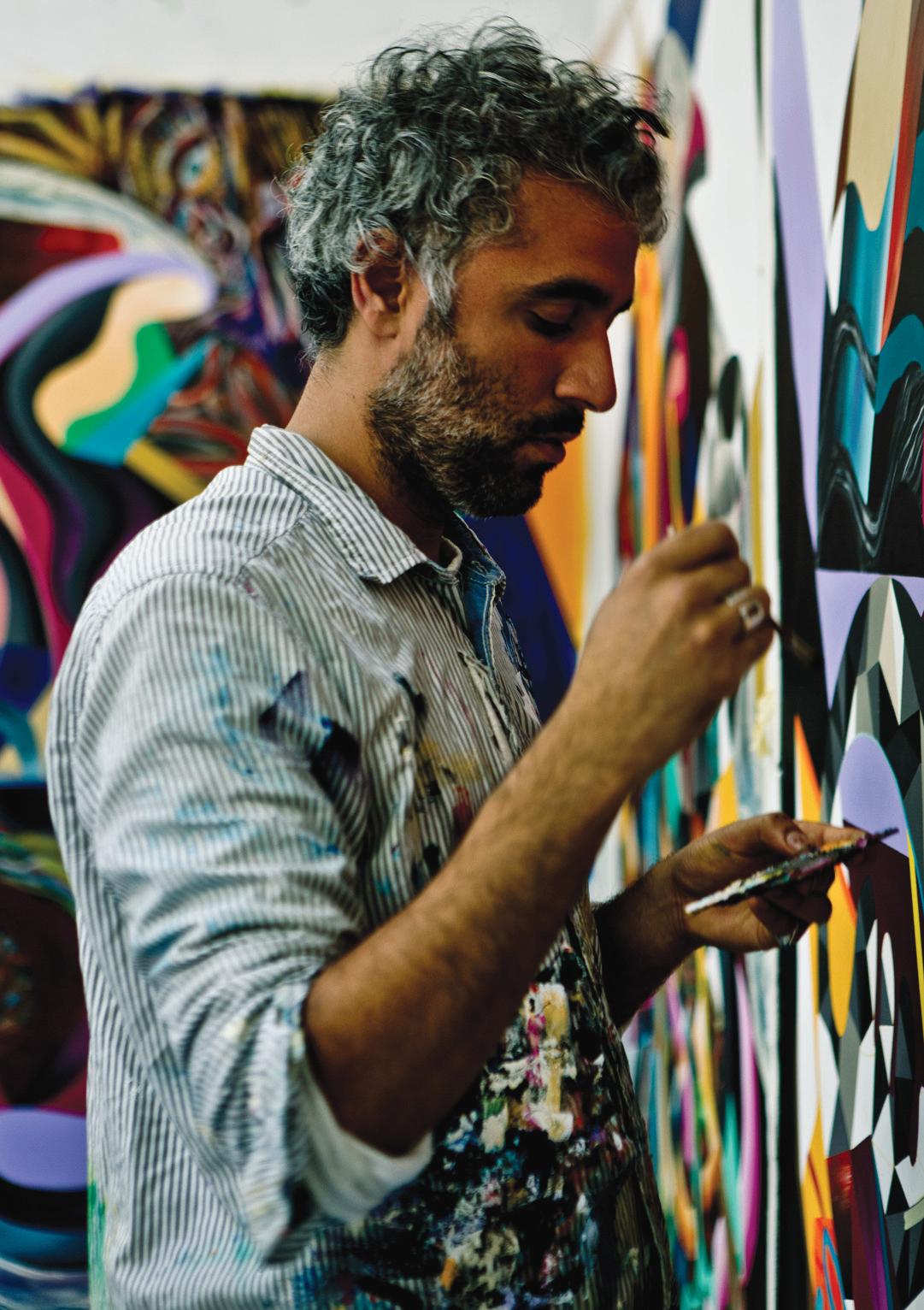
What thrills us? What does something have to be in order to be considered interesting? There seems to be an addiction amongst Arabs living in the Diaspora to war. To engage and experience it, although they are at a distance. A conversation is not deemed worthy unless it deals with the darkest side of humanity. We seek the thrill of conflict. It is like a drug addiction we force feed with news footage. Nothing quells the appetite quite like it. Through discussions of war and internalising a conflict we are geographically removed from, we abate the guilt of abandonment. I left a month before the Gulf War, and I’m still sorry for leaving. Due to my absence, the blood wildly courses through my veins focusing my energies into feeling a sense of connection to the war I missed. Will constantly talking about death, conflict, sanctions, revolutions, air raids, and violence ease the guilt of not having lived them? Does the thrill of discussing these brutal aspects of a life unlived give me the experience of what I should have felt?”
— Athier
THE EAGLE
The Eagle series employs the metaphor of the eagle of Saladin to question the circumstances and external forces which led to this symbol of freedom cloaking an oppressive truth.
Saladin, founder of the Ayyubid Dynasty and twelfth-century war hero who lead the Muslim opposition against the Crusaders in the Levant, is most remembered for his recapture of Jerusalem from the Franks. By virtue of his military prowess in the name of Islam, his eagle forms most of the national emblems in the region. Yet Athier utilises this pan-Arab symbol to reveal not the strength and liberty this eagle represents, but the oppression prevalent throughout Arab countries that is hidden beneath this proud symbol.
Exploring the birth of the fictional eagle in three paintings titled The Birth of an Eagle, and thereby the conception of the lie, Athier questions the transformative incubatory surroundings that could have affected the development of the eagle towards a false symbology.
As the artist questions, ‘When the eagle is a lie that falsely represents power and freedom to a people, what would this nest look like? At what point between hatching and becoming the eagle of Saladin would it become this lie? If twigs are wood, would the nest of the eagle destined to become a lie be made of false wood?’
Athier continues his exploration of how to rid oneself of this misconfigured symbol and the false roots which caused it to go awry in the six paintings of Destroy a Lie, observing the myriad of ways to tangibly remove that which is not tangible.
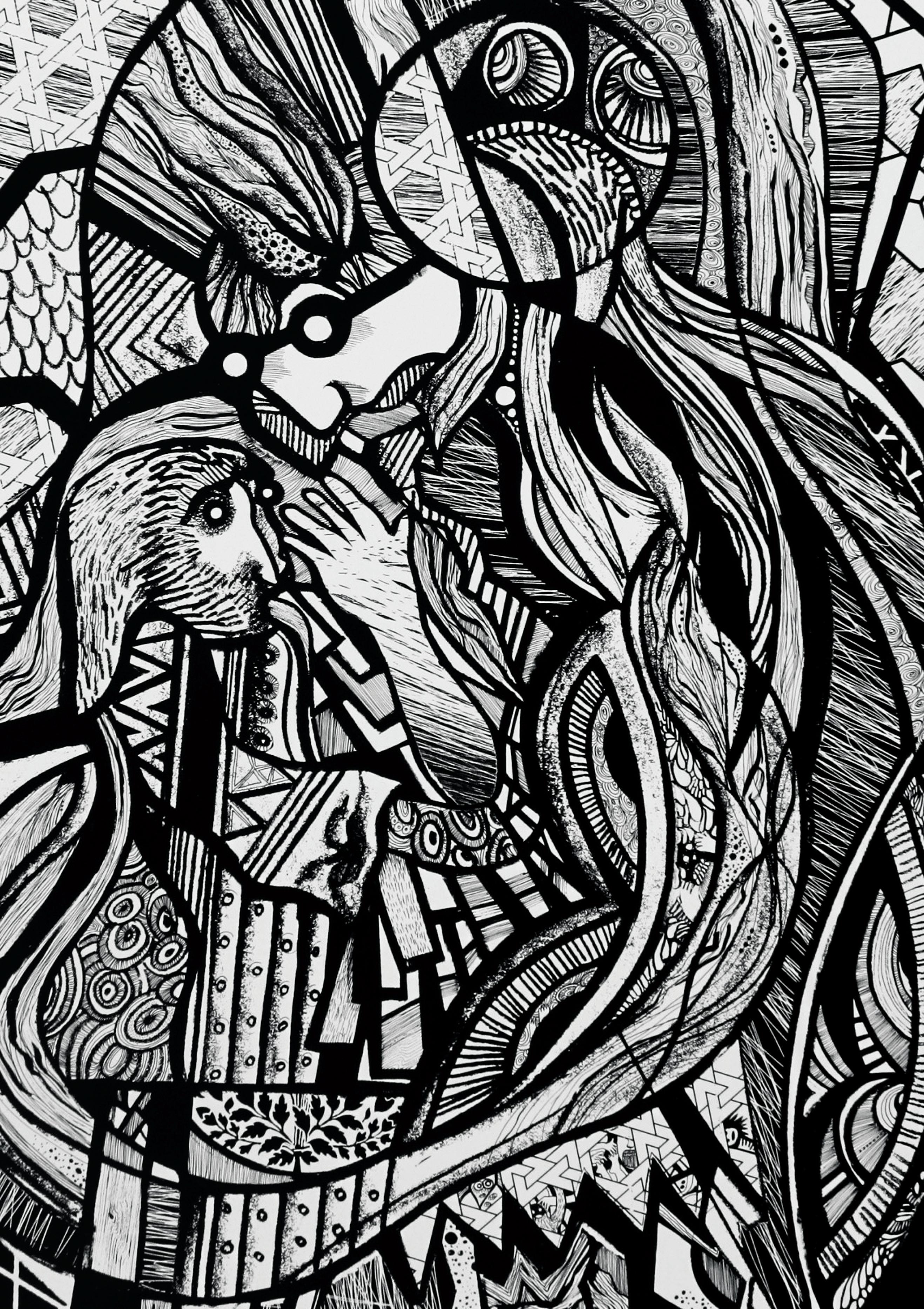
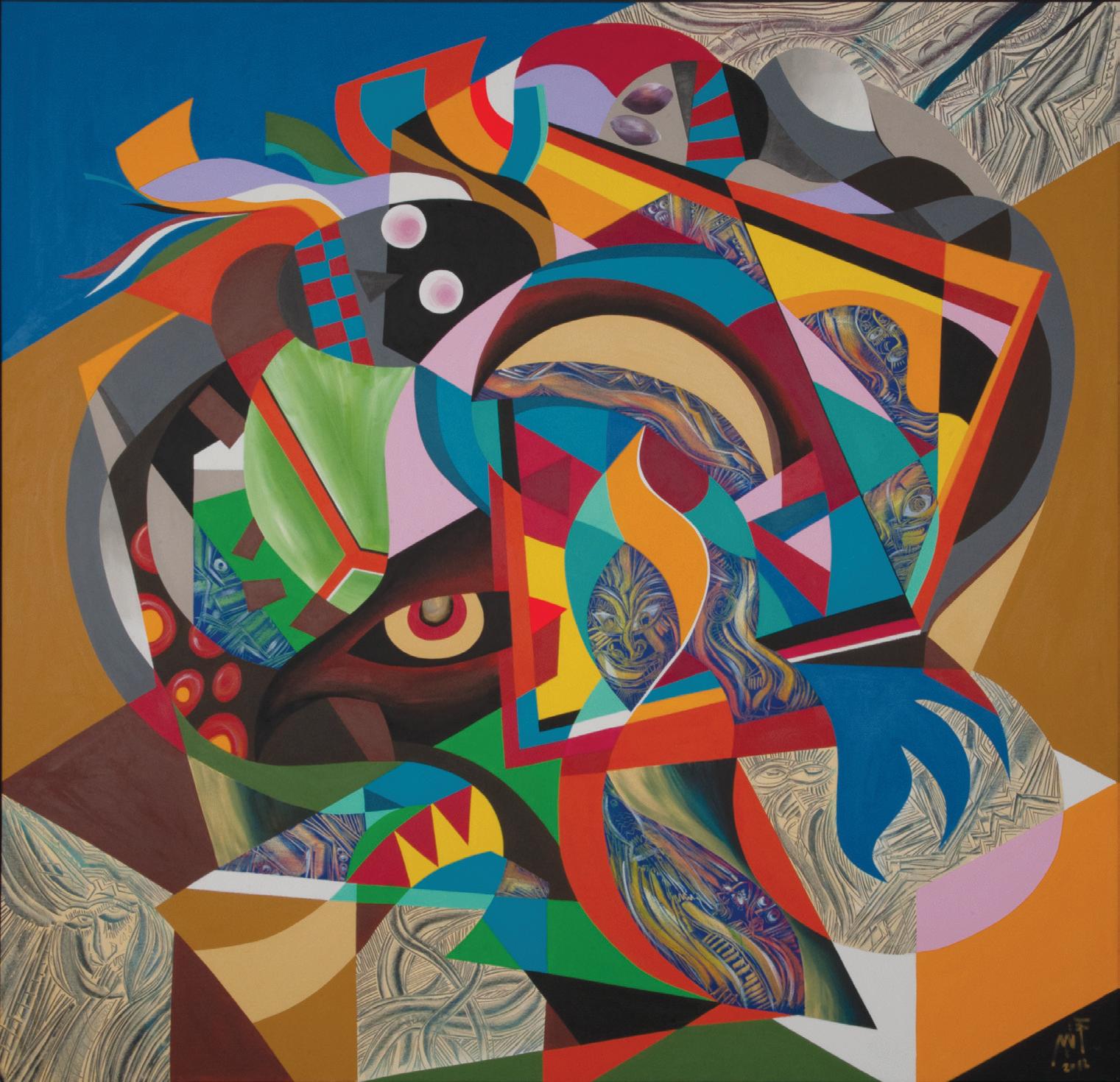 Untitled I (Eagle's Head) 2012
Acrylic on canvas 200 x 200 cm
Untitled I (Eagle's Head) 2012
Acrylic on canvas 200 x 200 cm
 The Birth of an Eagle II 2012
Acrylic on canvas
240 x 200 cm
The Birth of an Eagle II 2012
Acrylic on canvas
240 x 200 cm
 The Birth of An Eagle III 2012
Acrylic on canvas
200 x 240 cm
The Birth of An Eagle III 2012
Acrylic on canvas
200 x 240 cm
 The Birth of An Eagle IV 2012
Acrylic on canvas
200 x 300 cm
The Birth of An Eagle IV 2012
Acrylic on canvas
200 x 300 cm
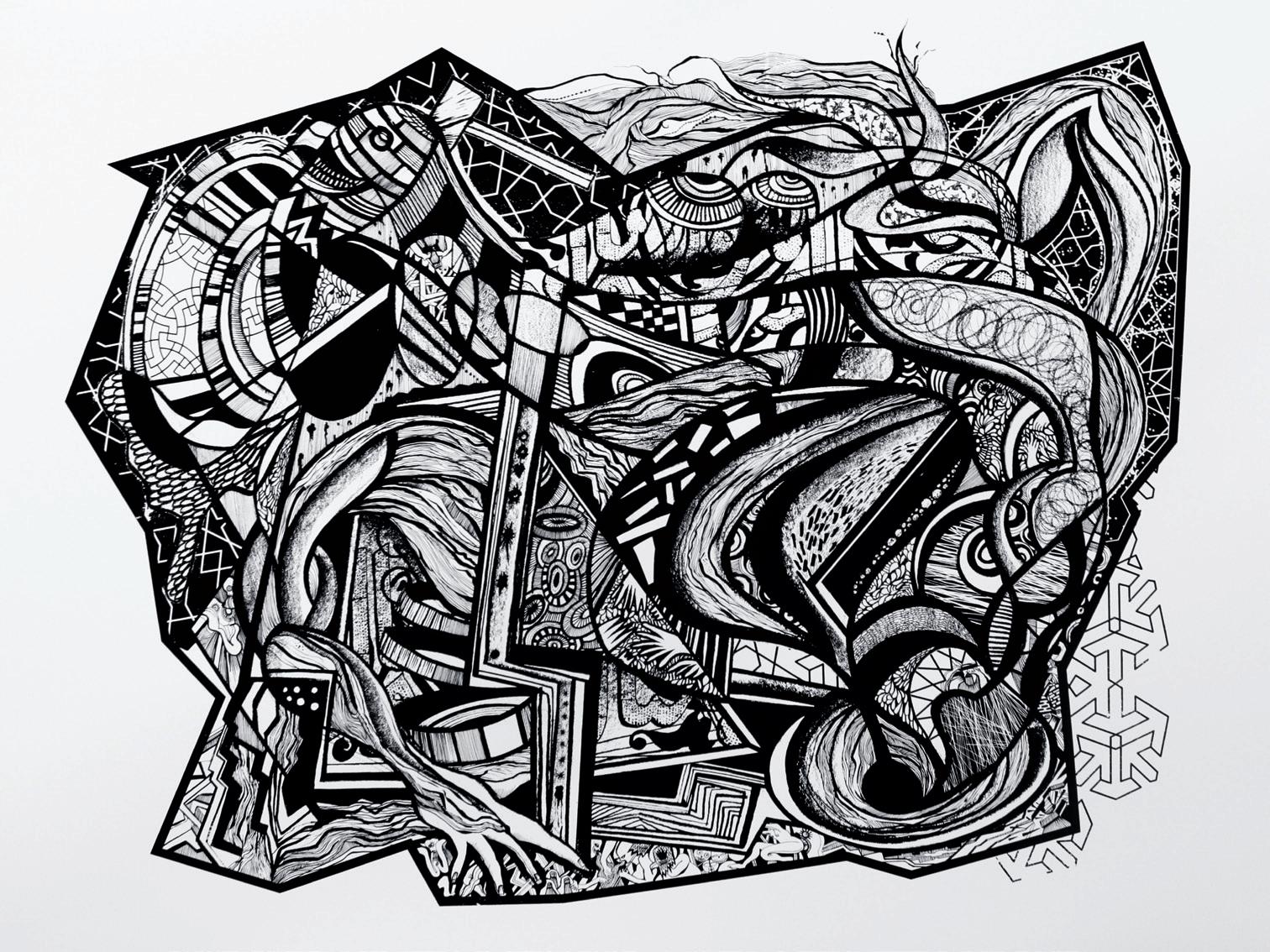
Destroy a Lie I 2012 Screen print 105 x 137 cm Edition of 25
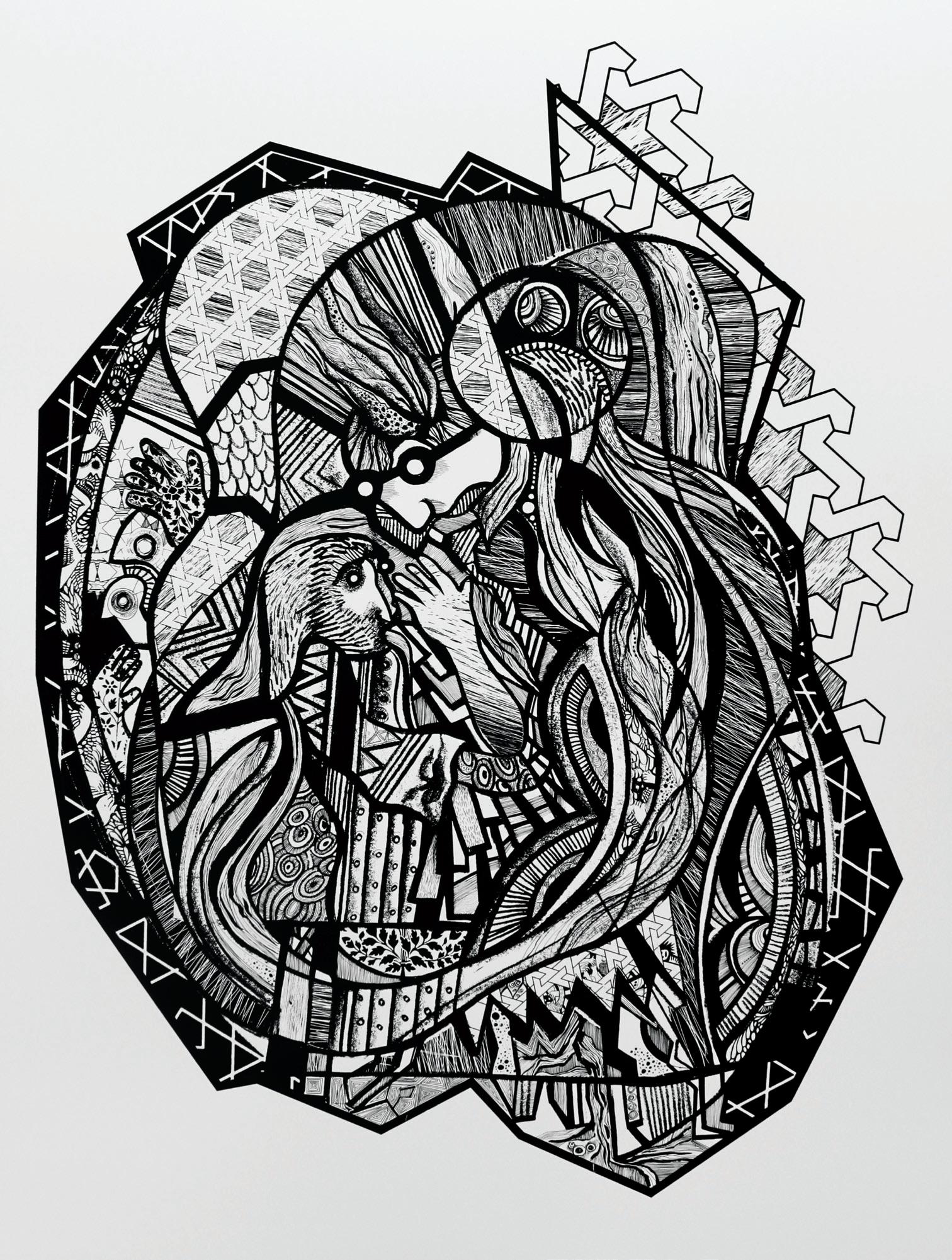
Destroy a Lie II 2012 Screen print 137 x 105 cm Edition of 25
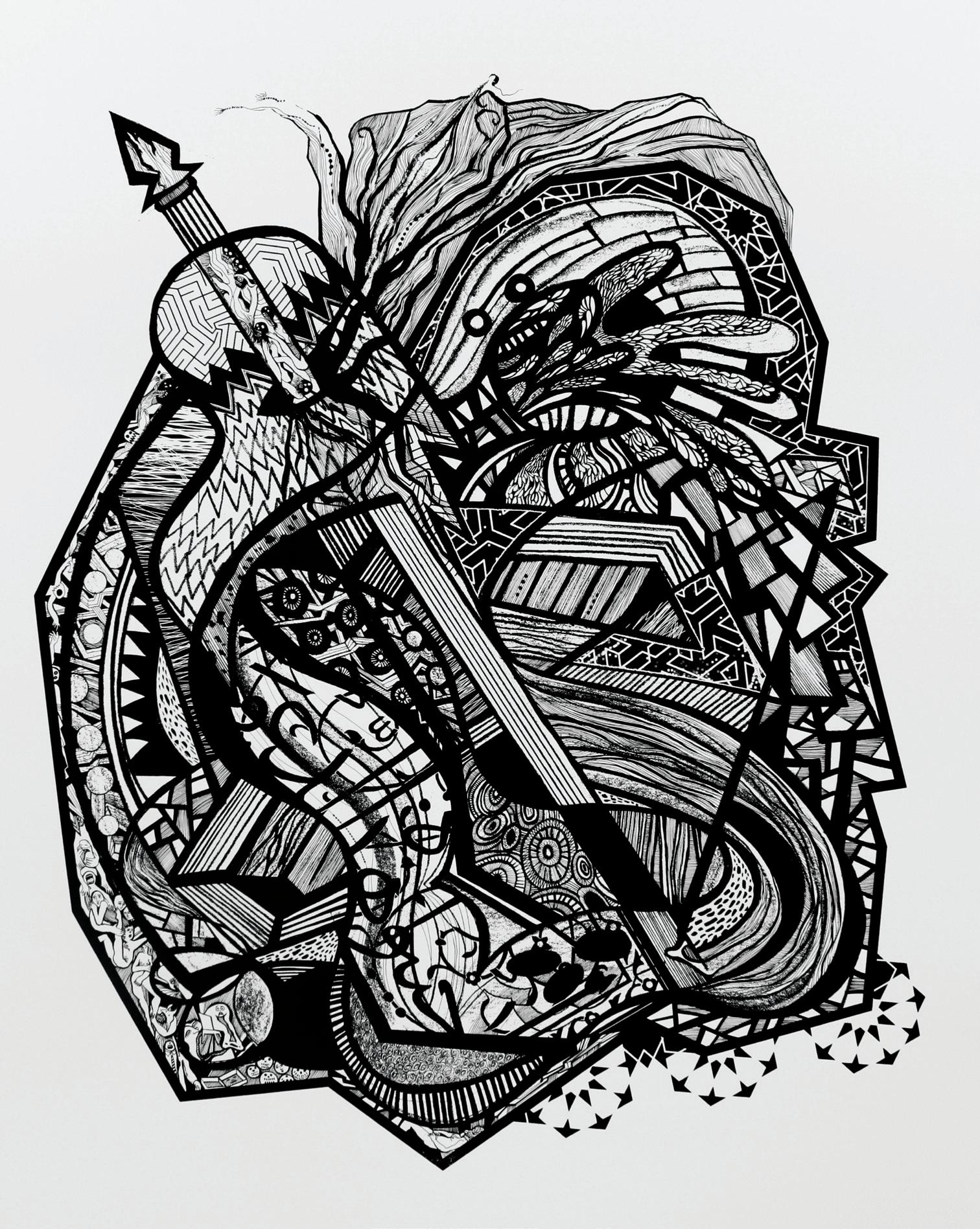
Destroy a Lie III 2012 Screen print 137 x 105 cm Edition of 25

Destroy a Lie IV 2012 Screen print 137 x 105 cm Edition of 25

Destroy a Lie V 2012 Screen print 137 x 105 cm Edition of 25

Destroy a Lie VI 2012 Screen print 137 x 105 cm Edition of 25
THE KING
Gilgamesh, the fifth king of Uruk (modern-day Iraq) and central character in the Epic of Gilgamesh, the greatest surviving early Mesopotamian literary work, forms Athier’s central character in Every Hunter can be Hunted
Athier tangles ancient works of art and historical references into this abstracted composition. Gilgamesh was said to have been buried beneath the Euphrates riverbed and here we witness him rising from his burial place. The Eagle of Saladin a symbol of Arab nationalism, freedom and strength, is here reconfigured as a parasite, clinging to the face of the resurrected Gilgamesh. The Dying Lion, a bas-relief from the North Palace of Ashurbanipal in Ninevah dating to 645 B.C. depicts a wounded lion seated on his hindquarters vomiting blood and succumbing to the spear wounding his side. However Athier has transfigured the once noble lion subduer into the lion itself, the king becomes the wounded prey, vomiting his own life, wasted from the eagle and its false symbology.
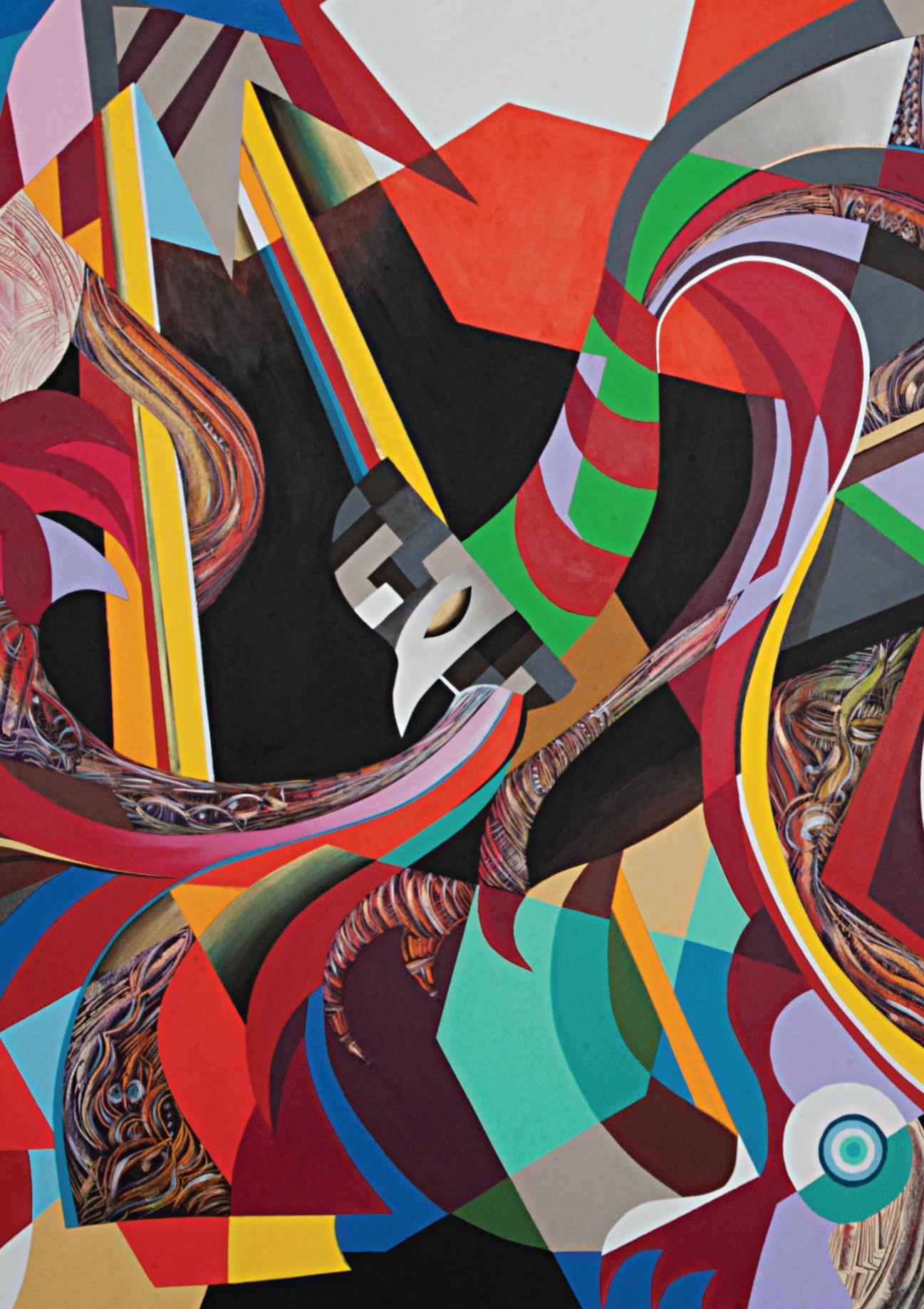
.
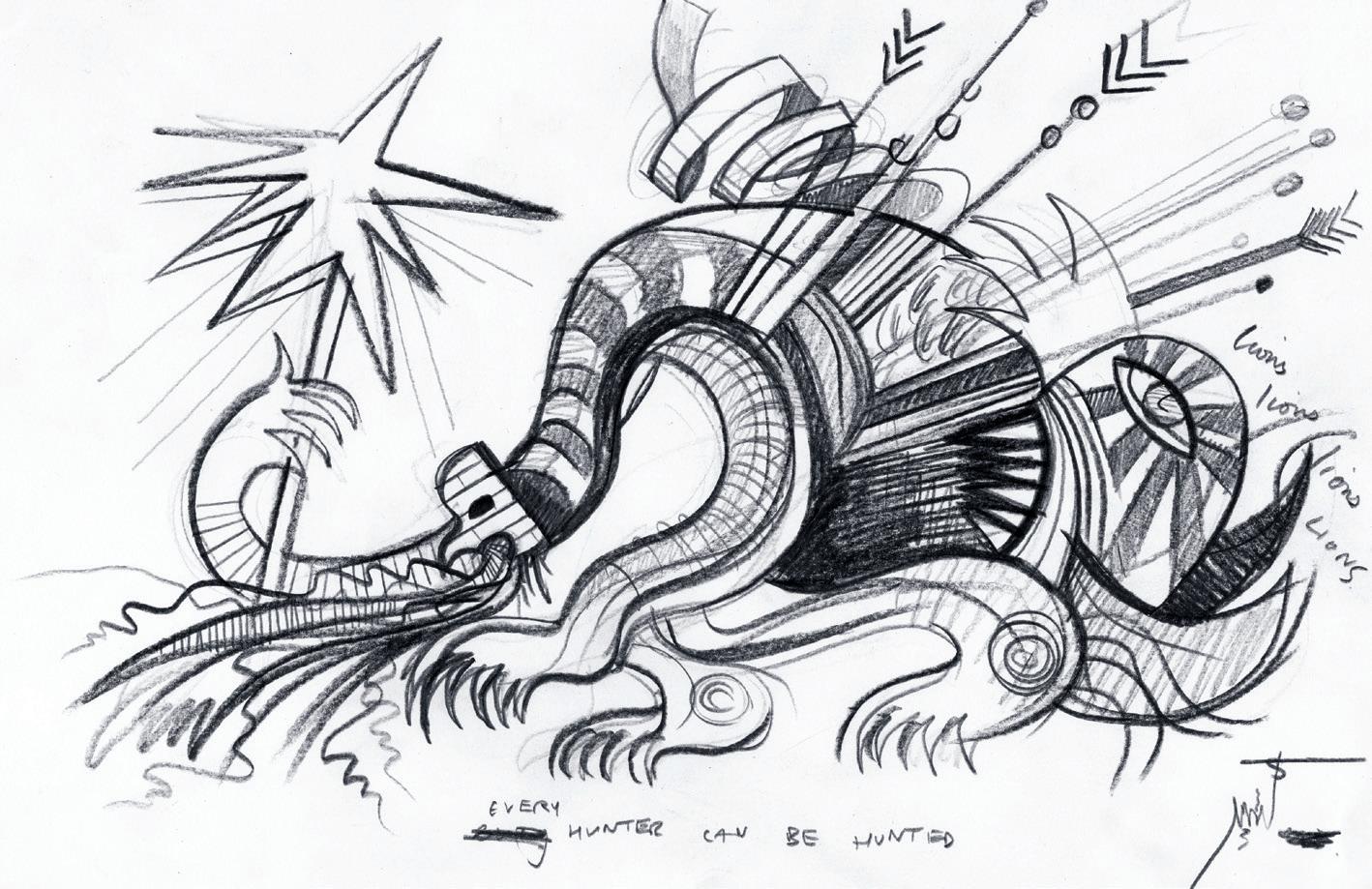
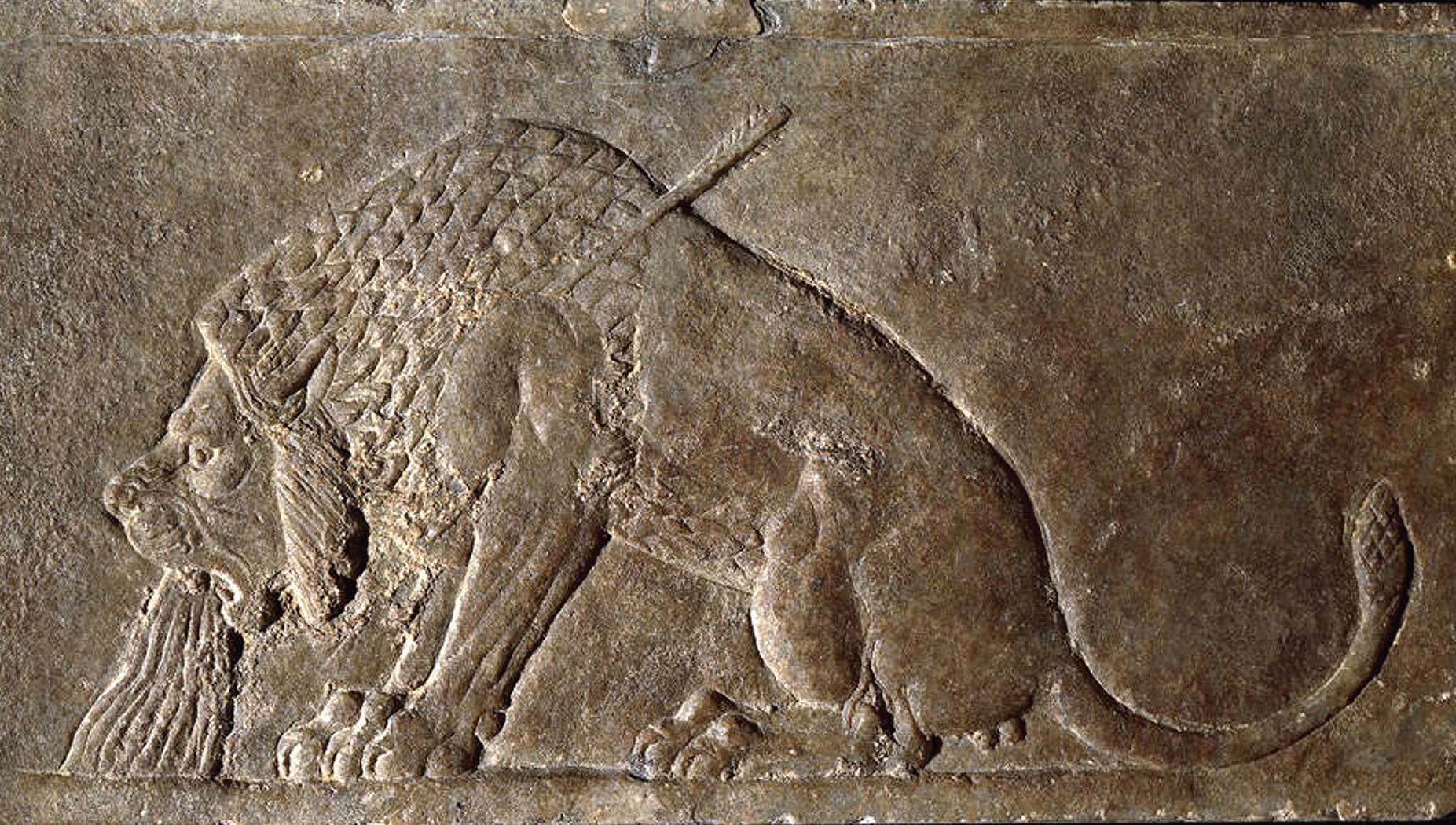 The Dying Lion circa 645 B.C.
Alabaster bas-relief from the North Palace of Ashurbanipal, Ninevah, Iraq The British Museum
Every Hunter Can Be Hunted Sketch
The Dying Lion circa 645 B.C.
Alabaster bas-relief from the North Palace of Ashurbanipal, Ninevah, Iraq The British Museum
Every Hunter Can Be Hunted Sketch

Hunter can be
Every
Hunted 2012
Acrylic on canvas
200 x 340 cm
THRILL ME!
The THRILL ME series began with a dream Athier had while flying from Beirut to Istanbul in May 2012. When he awoke, he quickly sketched the scenario he had just seen. In the dream, a man seated in the back of a car driven by a woman asked a simple question. ‘Do I thrill you?’ The driver did not answer at first, staring expressionless out the rain spotted windscreen. Then she suddenly replied, ‘No. You’ll never thrill me.’ With this statement, she began to transform into a large monster, quickly filling the small car. Turning towards the man in the backseat she screams, ‘YOU will never thrill me because YOU’LL NEVER KILL ME!’, and with this she devoured the man.


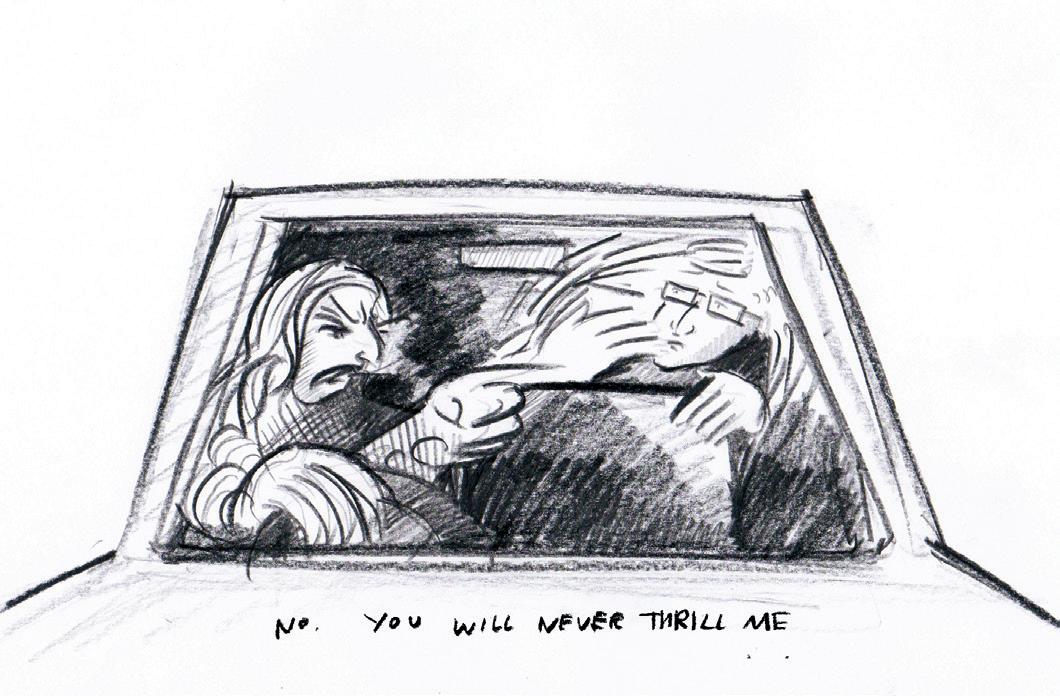
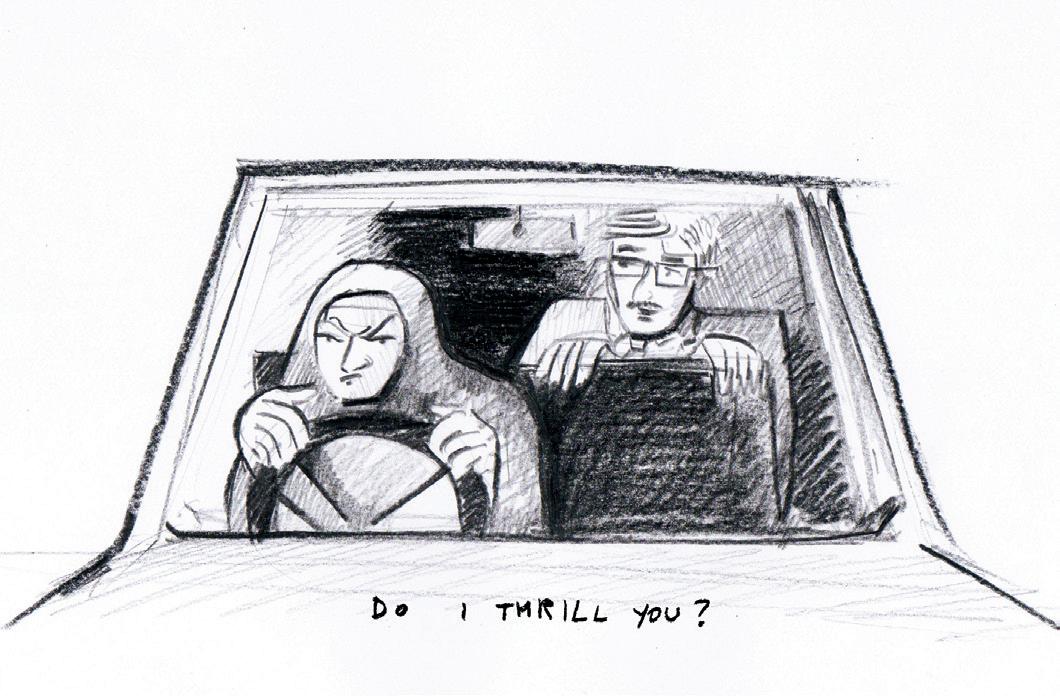 The Dream Sequence Sketches
The Dream Sequence Sketches
Through the triptych, we experience the psychological transformation of the woman into a monster. In Do I Thrill You?, the woman’s sexual desires are not satiated and she finds her companion’s company increasingly irritating for this reason. She begins to form delusions of his demise and enjoyment is found in these. Soon, this form of pleasure becomes more satisfying to her than shared intimacies.
You’ll Never Thrill Me because You’ll Never Kill Me depicts the moment the monster turns in the car towards the man in the backseat to quench her sexual appetite. His humanity and capacity to perish is the only thing which she now finds stimulating and the monster devours him to satisfy her new cravings.
She Has Eaten Him is the final stage of the triptych, where the monster stands fully transformed, her eyes widened with bloodlust, the monster having taken over the woman completely. Where once a loving mate stood, now a murderer stands. Her engorged eyes and claw like hands show she has lost her own humanity in her violent desires.
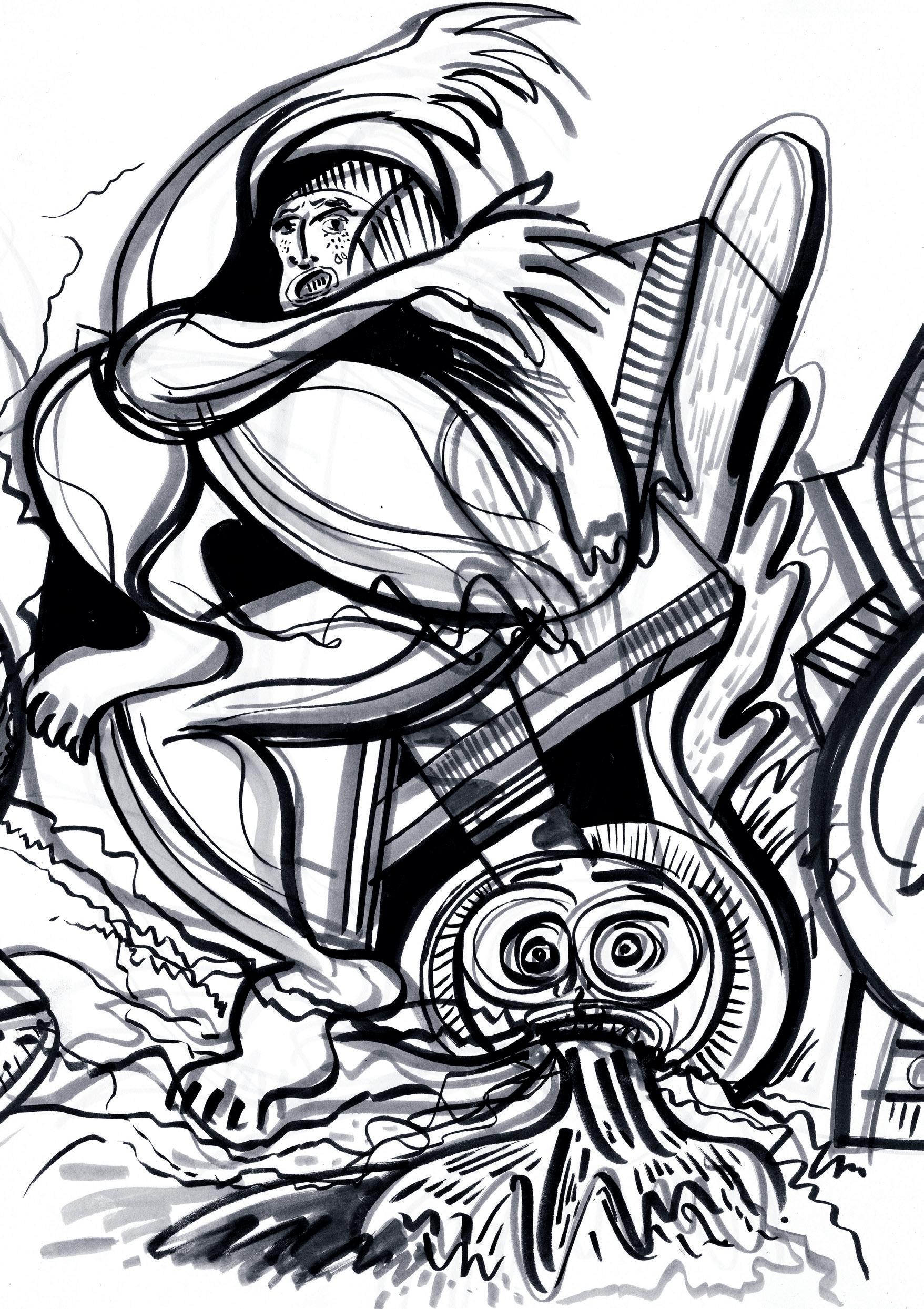 You'll Never Thrill Me Because You'll Never Kill Me Sketch (detail)
You'll Never Thrill Me Because You'll Never Kill Me Sketch (detail)

You'll Never Thrill Me! (sketch) 2012
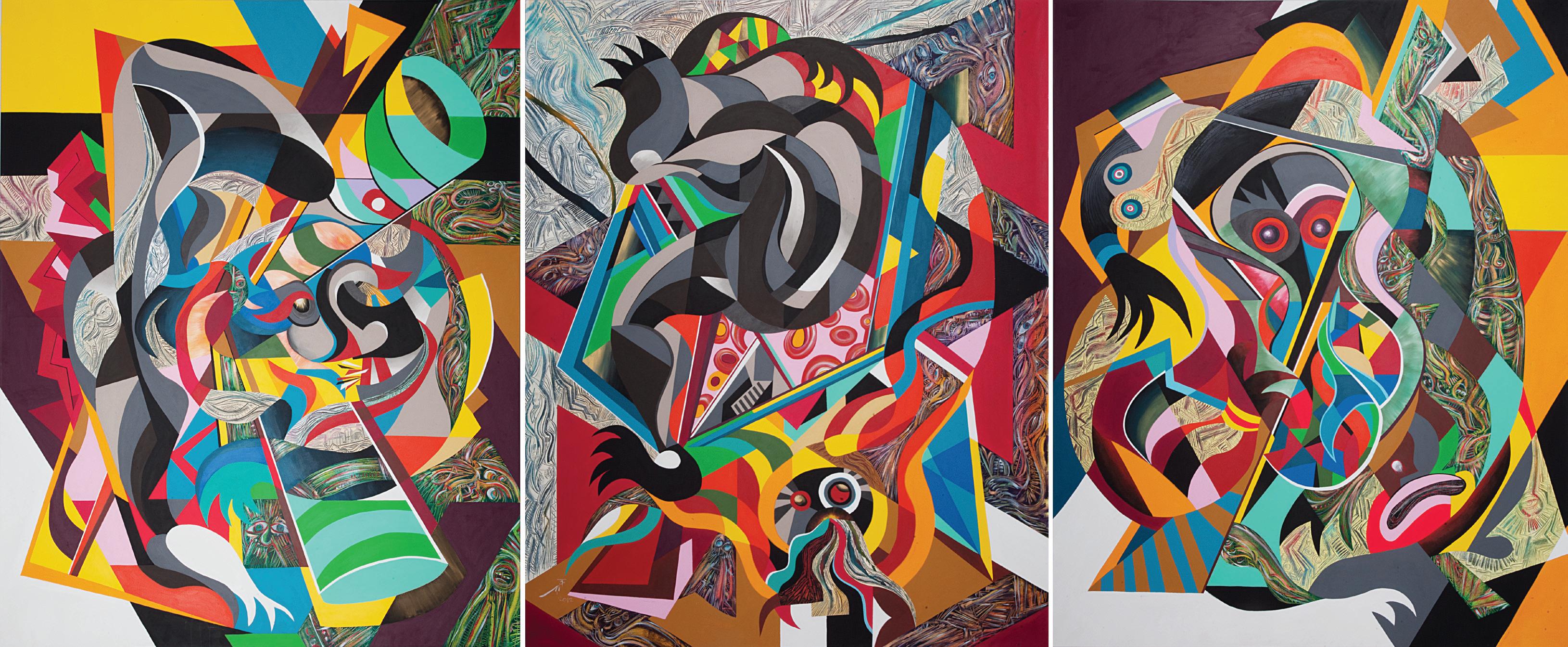 Thrill Me! 2012
Acrylic on canvas
260 x 600 cm
Thrill Me! 2012
Acrylic on canvas
260 x 600 cm

Do I Thrill You?
2012
Acrylic on canvas
260 x 200 cm

You'll Never Thrill Me Because You'll Never Kill Me
2012
Acrylic on canvas
260 x 200 cm
She has Eaten Him 2012
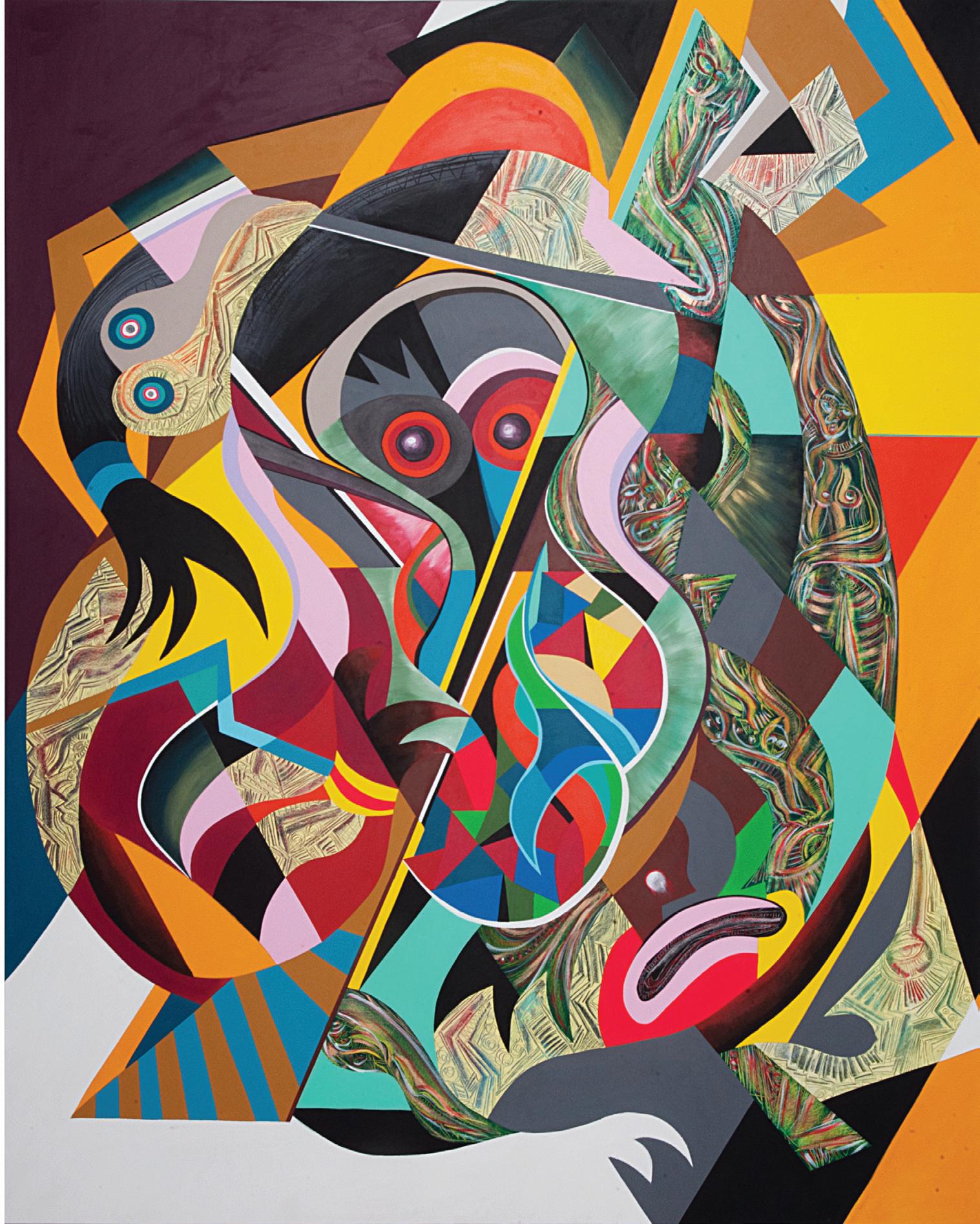 Acrylic on canvas
260 x 200 cm
Acrylic on canvas
260 x 200 cm
Ayyam Gallery
Founded by collectors and cousins Khaled and Hisham Samawi in Damascus in 2006, Ayyam Gallery sought to nurture Syria’s burgeoning and dynamic contemporary art scene through landmark non-profit initiatives such as the Shabab Ayyam Project, an incubator for emerging artists. Expansion into Beirut and Dubai enabled Ayyam Gallery to broaden its scope from the promotion of work by Syrian artists to those from the wider Middle East region. In doing so, Ayyam Gallery has established itself as one of the foremost exponents of Middle Eastern contemporary art to the international community.
Today, Ayyam Gallery is recognized as a leading cultural voice in the region, representing a roster of Arab and Iranian artists with an international profile and museum presence. A number of non-commercial exhibitions, as well as the launch of Ayyam Publishing, Ayyam Editions, and The Young Collectors Auction, have further succeeded in showcasing the work of Middle Eastern artists with the aim of educating a wider audience about the art of this significant region. Ayyam Gallery Damascus currently functions as a studio and creative haven for artists who remain in the wartorn city. In early 2013, Ayyam Gallery launched new spaces in London and Jeddah.
Ayyam Gallery, Beirut Beirut Tower, G.Floor, Zeitoune Street, Beirut Marina, Solidere T: +961 1 374450/51 beirut@ayyamgallery.com www.ayyamgallery.com
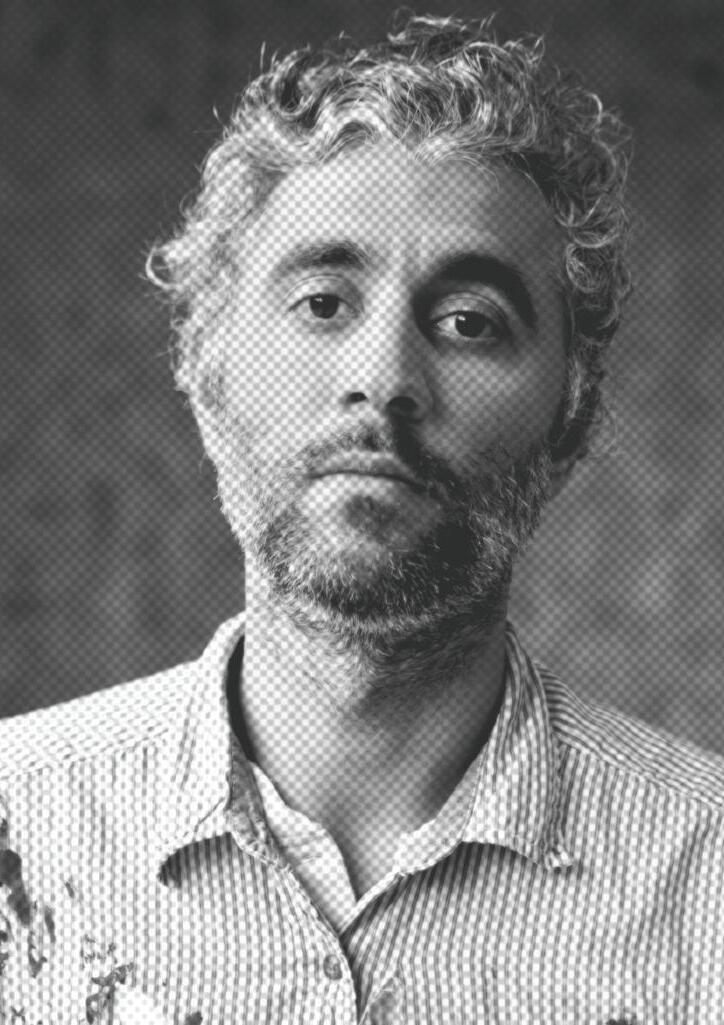




 Untitled I (Eagle's Head) 2012
Acrylic on canvas 200 x 200 cm
Untitled I (Eagle's Head) 2012
Acrylic on canvas 200 x 200 cm
 The Birth of an Eagle II 2012
Acrylic on canvas
240 x 200 cm
The Birth of an Eagle II 2012
Acrylic on canvas
240 x 200 cm
 The Birth of An Eagle III 2012
Acrylic on canvas
200 x 240 cm
The Birth of An Eagle III 2012
Acrylic on canvas
200 x 240 cm
 The Birth of An Eagle IV 2012
Acrylic on canvas
200 x 300 cm
The Birth of An Eagle IV 2012
Acrylic on canvas
200 x 300 cm








 The Dying Lion circa 645 B.C.
Alabaster bas-relief from the North Palace of Ashurbanipal, Ninevah, Iraq The British Museum
Every Hunter Can Be Hunted Sketch
The Dying Lion circa 645 B.C.
Alabaster bas-relief from the North Palace of Ashurbanipal, Ninevah, Iraq The British Museum
Every Hunter Can Be Hunted Sketch




 The Dream Sequence Sketches
The Dream Sequence Sketches
 You'll Never Thrill Me Because You'll Never Kill Me Sketch (detail)
You'll Never Thrill Me Because You'll Never Kill Me Sketch (detail)

 Thrill Me! 2012
Acrylic on canvas
260 x 600 cm
Thrill Me! 2012
Acrylic on canvas
260 x 600 cm


 Acrylic on canvas
260 x 200 cm
Acrylic on canvas
260 x 200 cm
